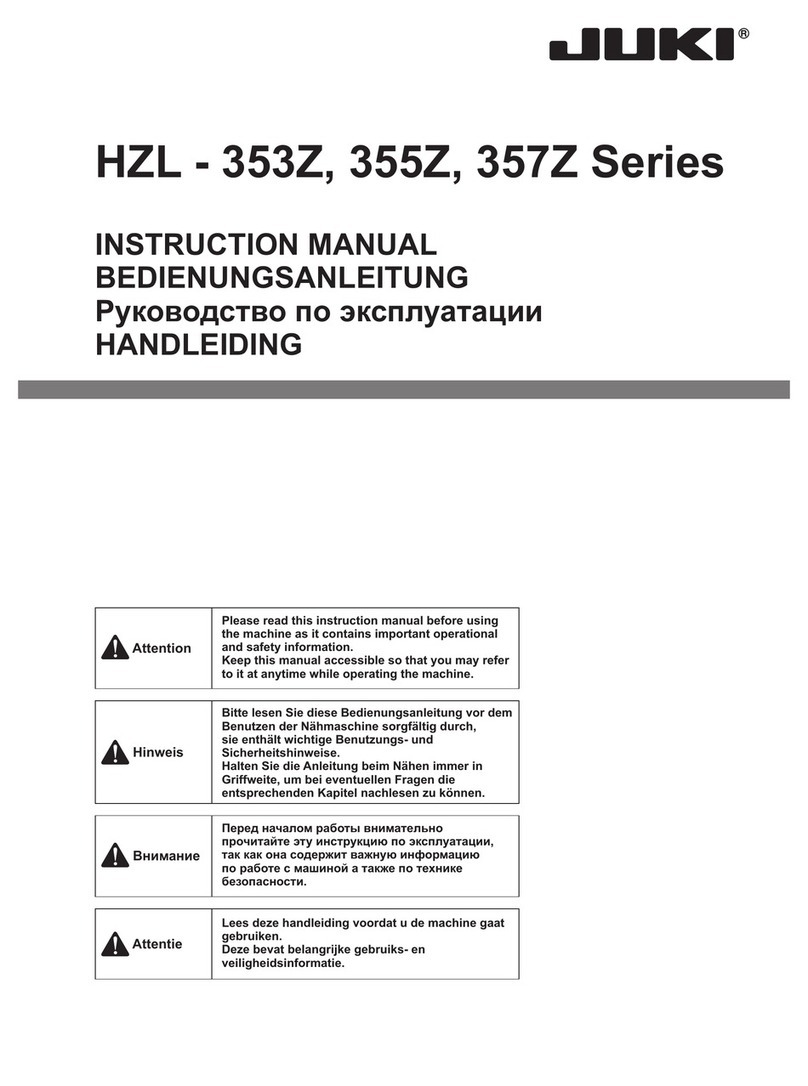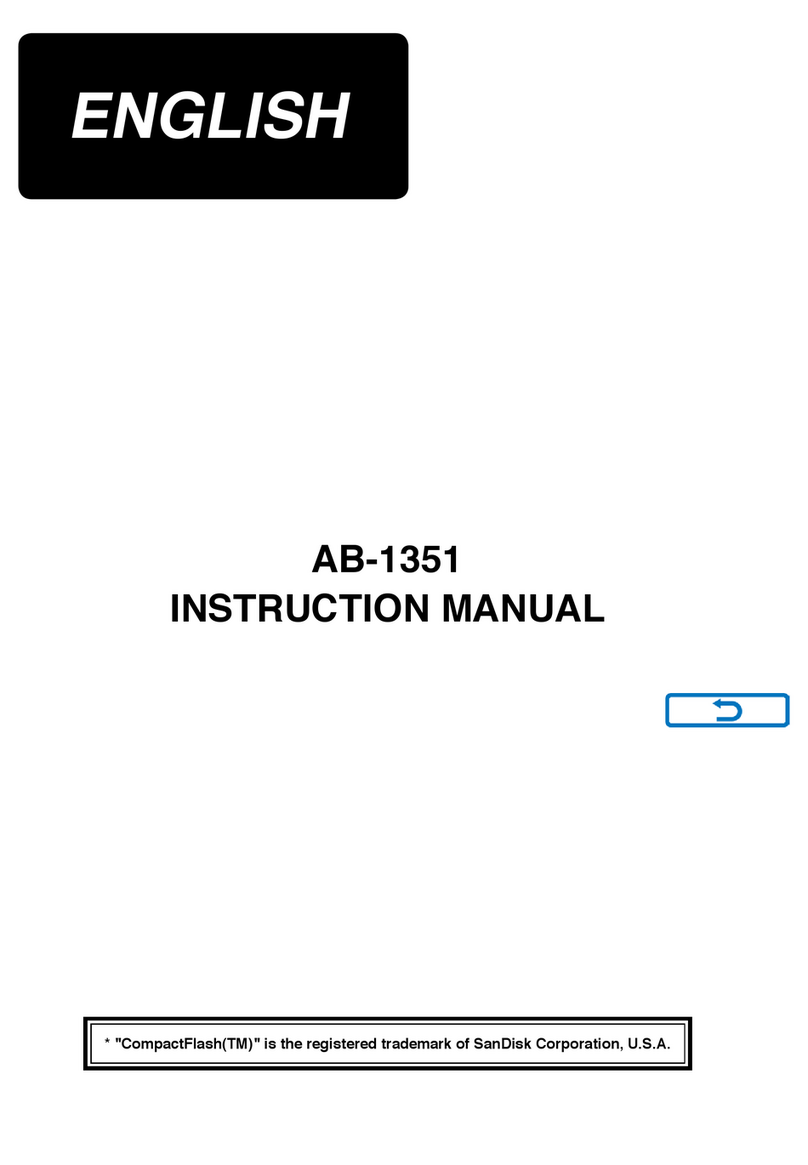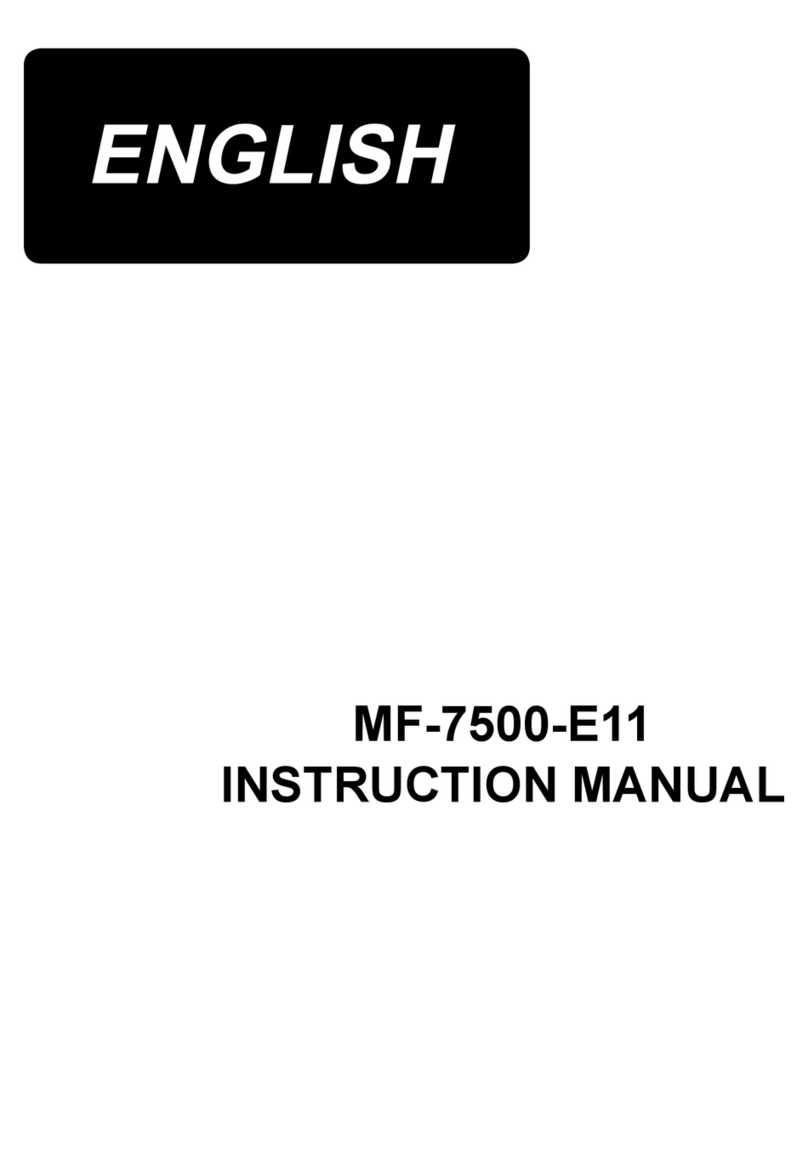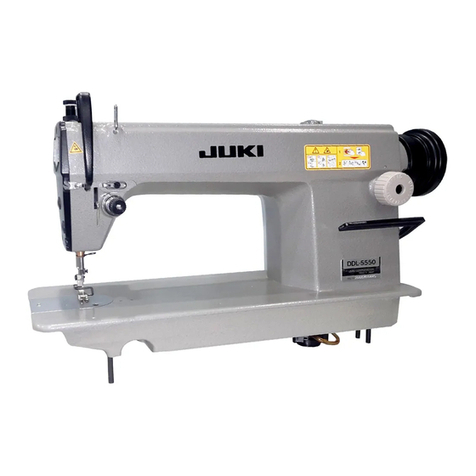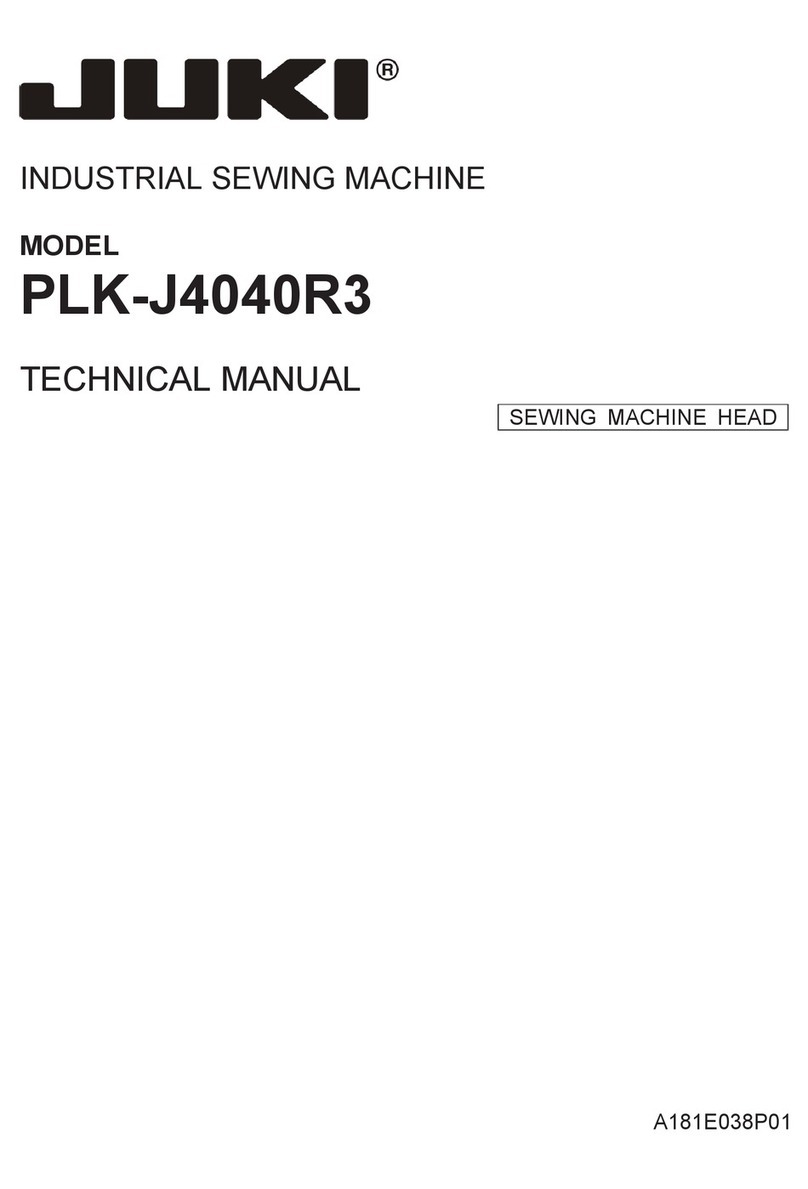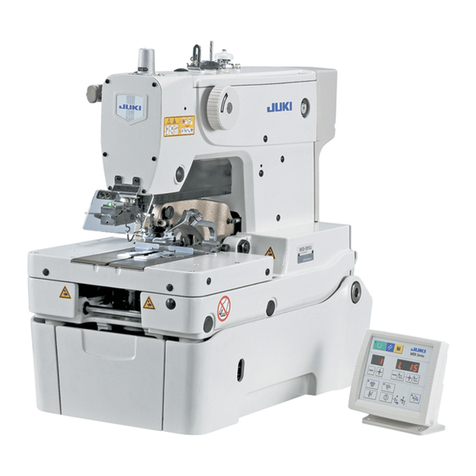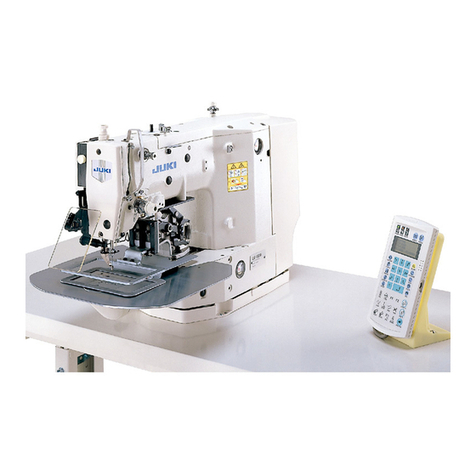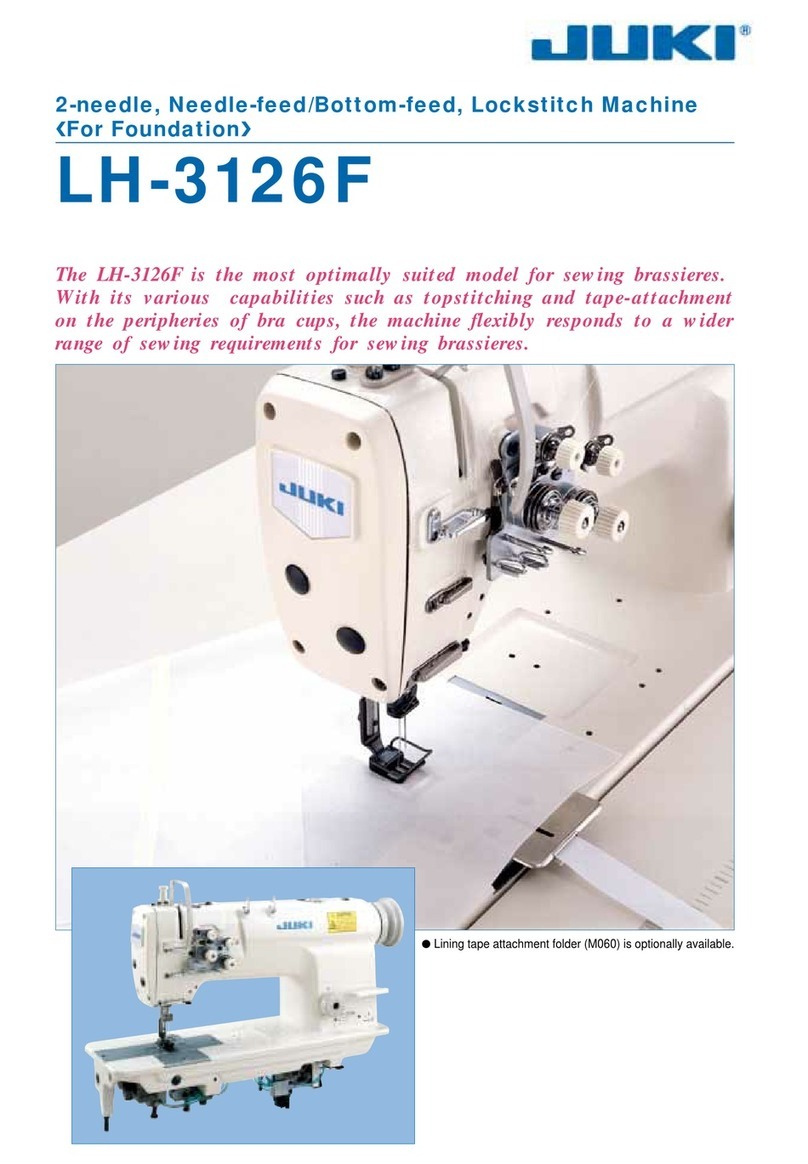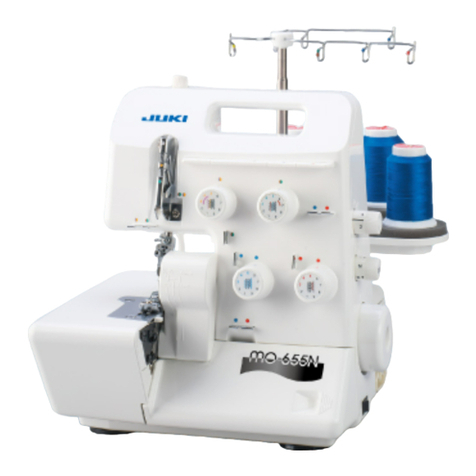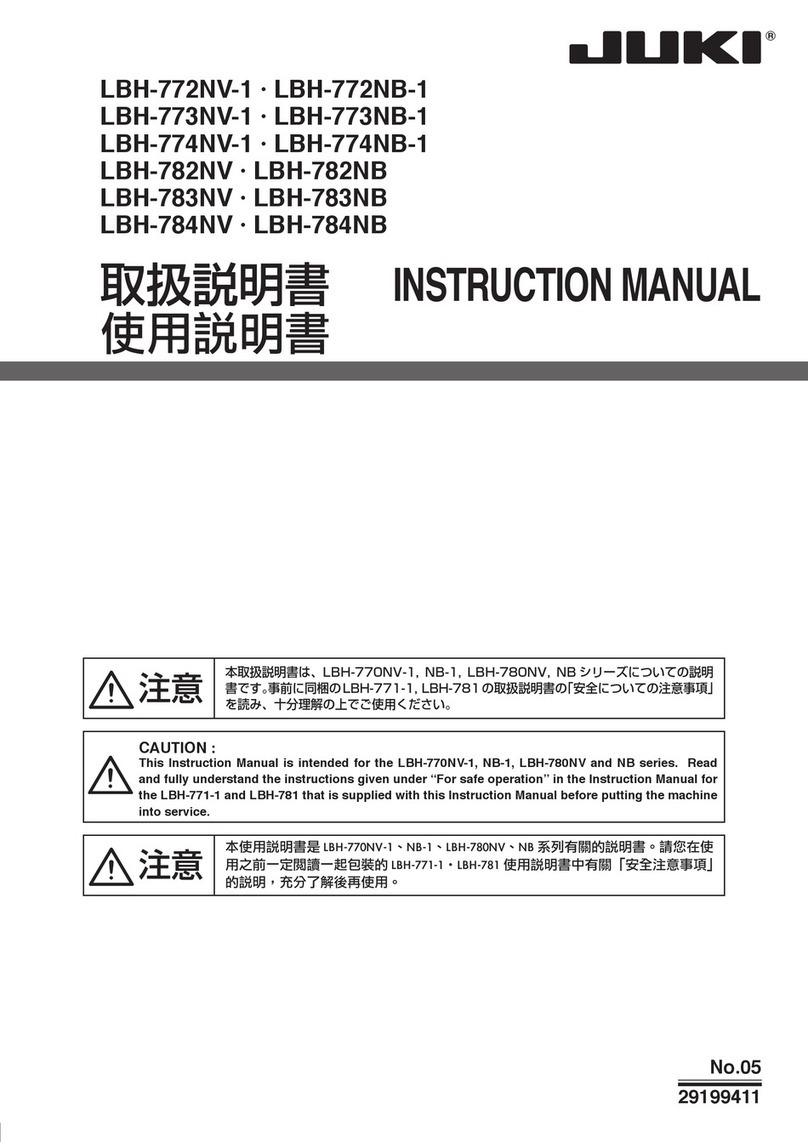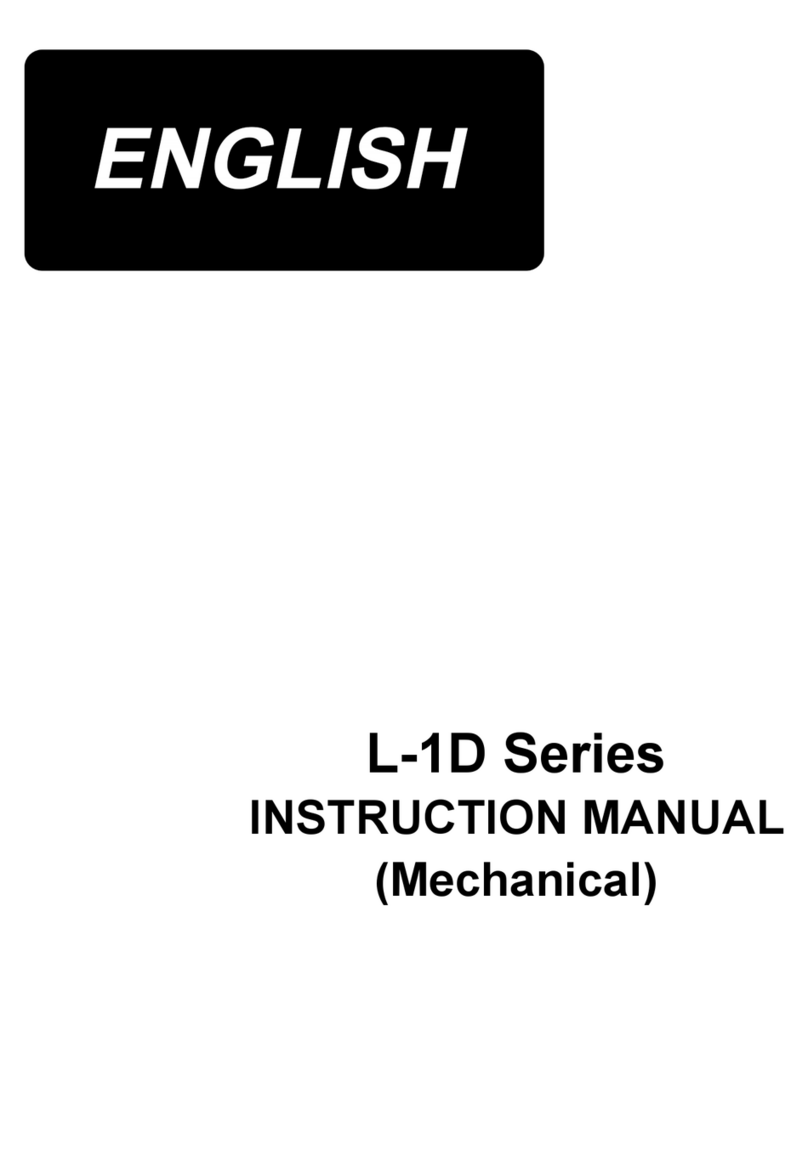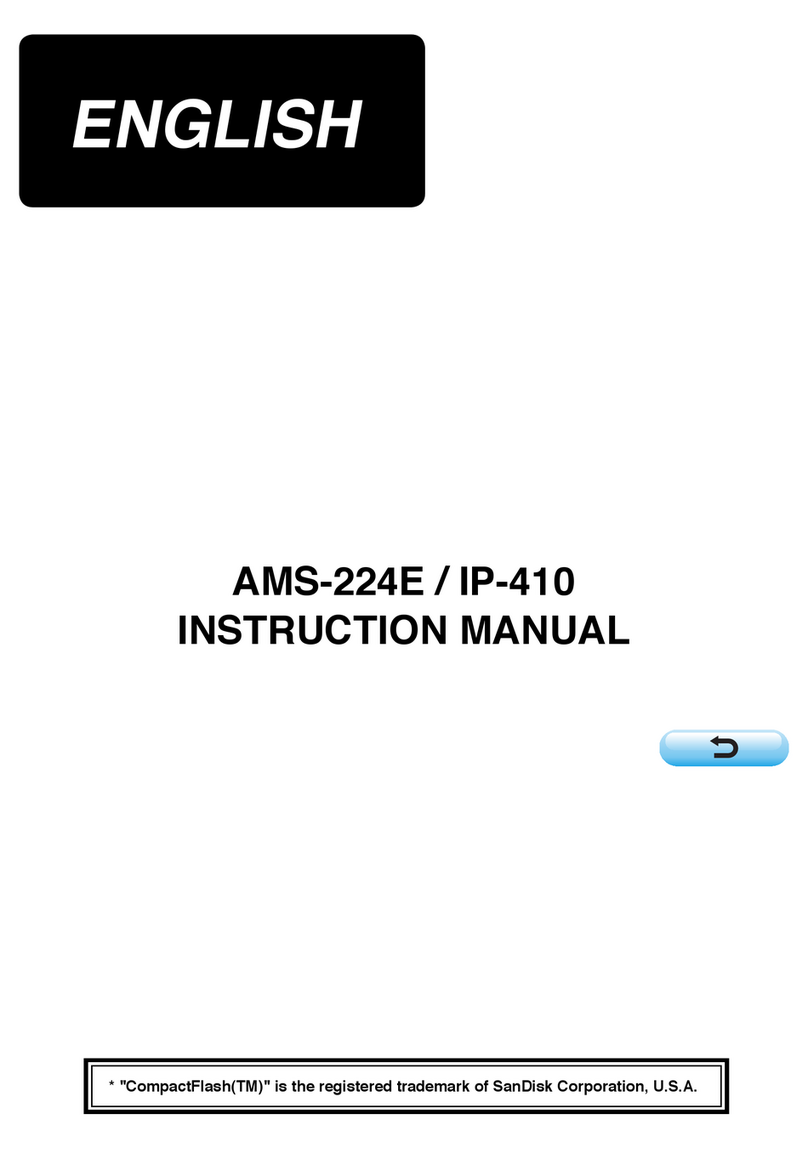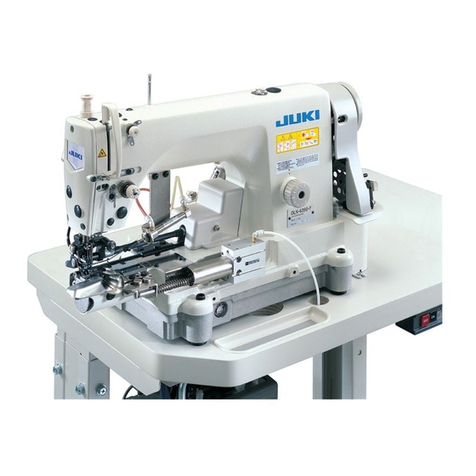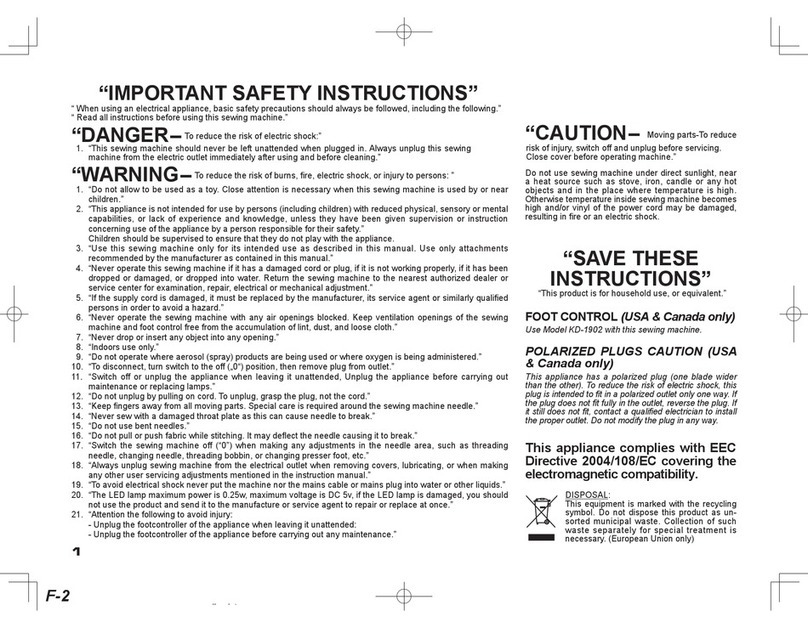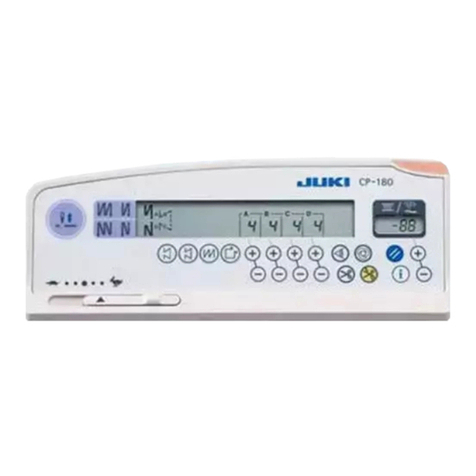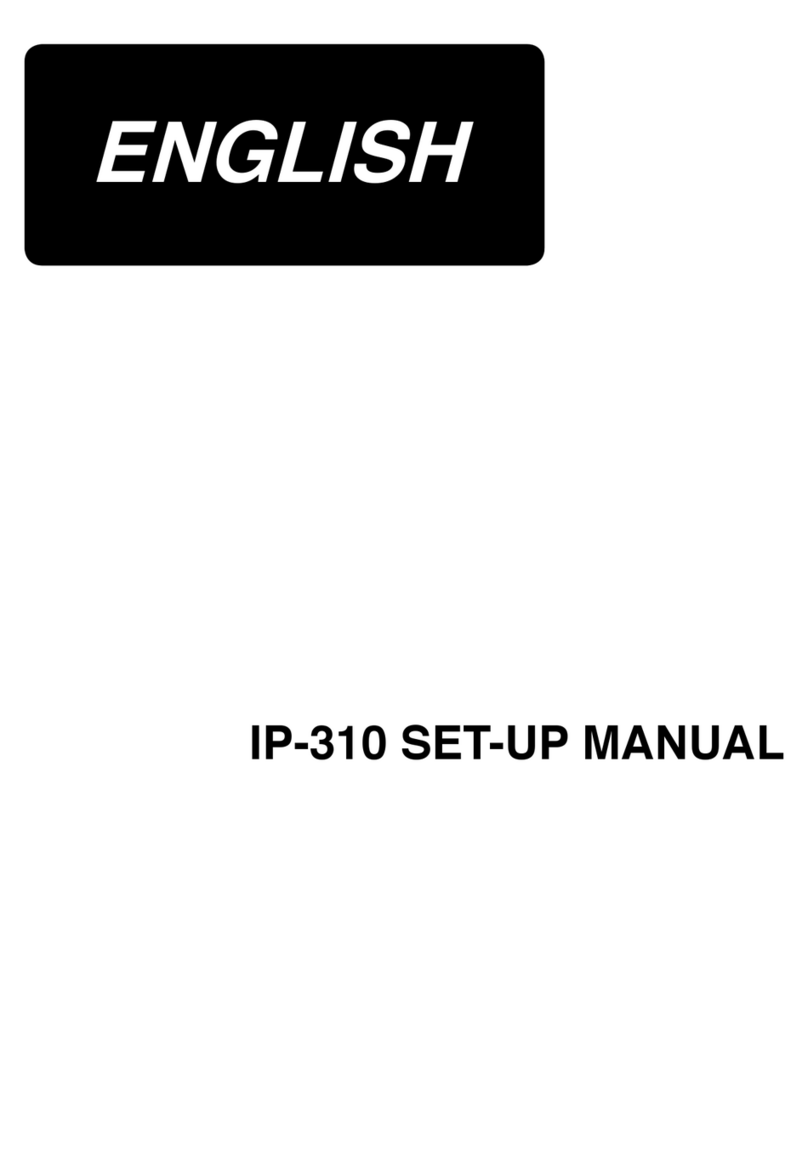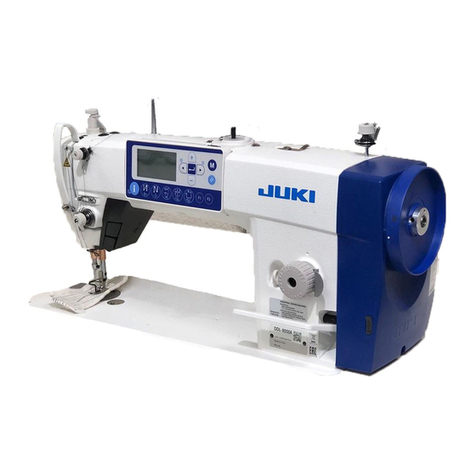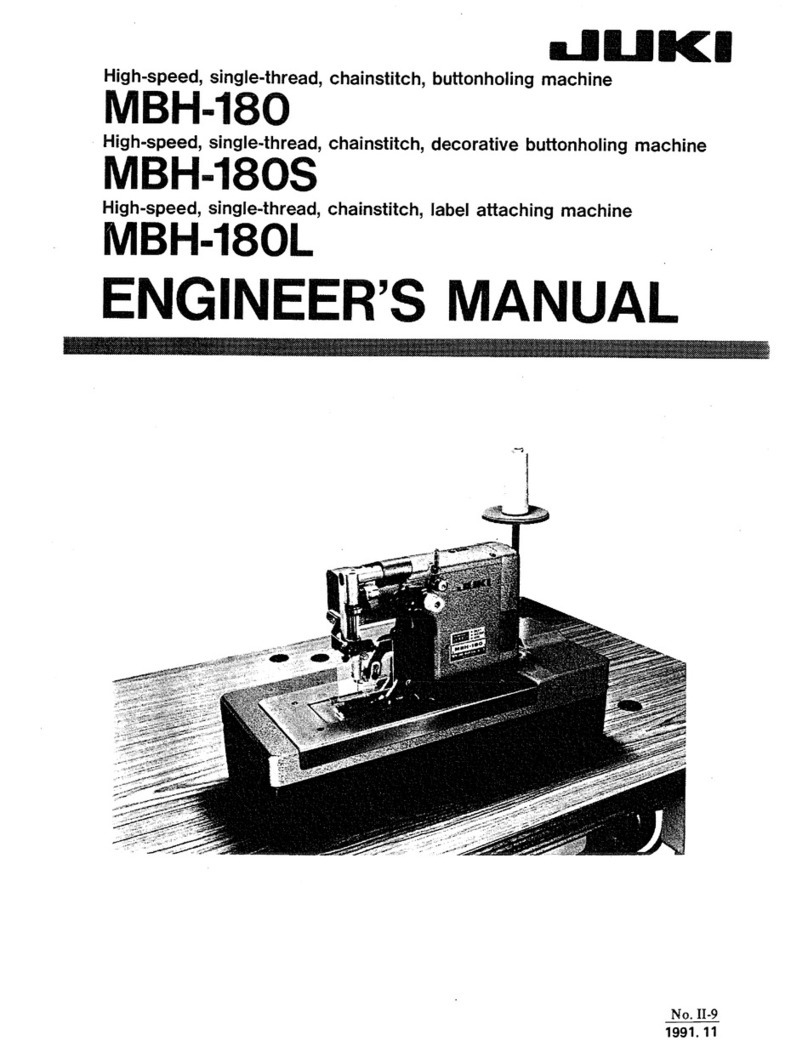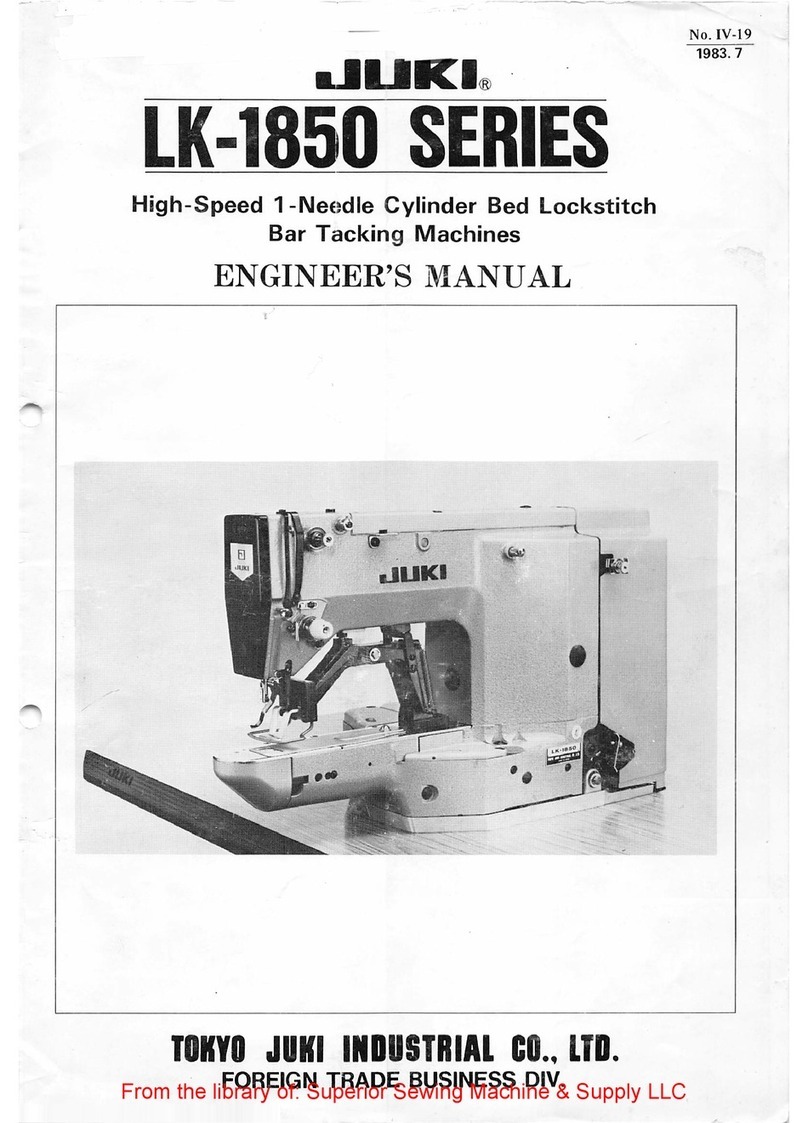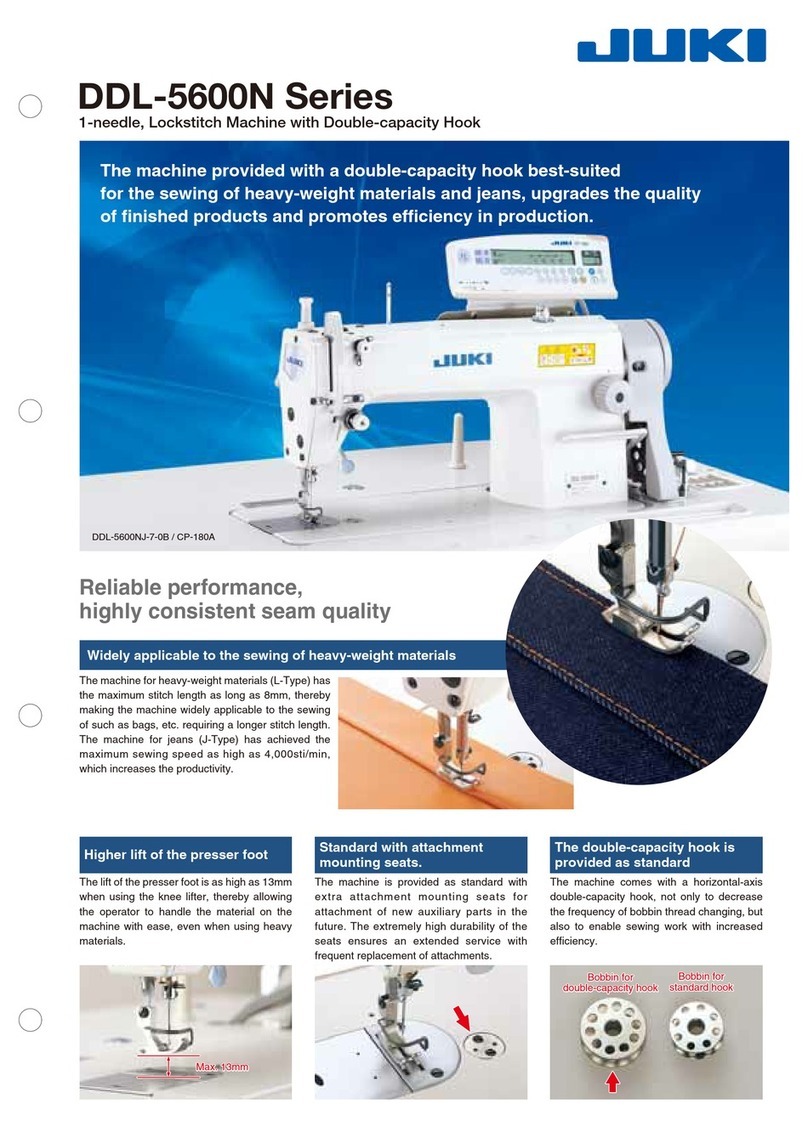
i
CONTENTS
!. SPECIFICATIONS ..........................................................................................................1
@. CONFIGURATION OF THE MACHINE COMPONENTS ...............................................2
#. INSTALLATION ..............................................................................................................3
1. Installing the machine head onto the table ........................................................................... 3
2. Selecting the motor pulley and the belt................................................................................. 9
3. Installing the motor.................................................................................................................. 9
4. Setting the belt ........................................................................................................................ 9
5. Installing the belt cover......................................................................................................... 10
6. Installing the chain ................................................................................................................ 10
7. Installing the thread guide .................................................................................................... 10
8. Installing the needle bar thread take-up cover ................................................................... 11
$. LUBRICATION AND OILING .......................................................................................11
1. Lubricating oil ........................................................................................................................ 11
2. Oiling....................................................................................................................................... 11
3. Silicon oil lubricating unit..................................................................................................... 12
%. OPERATION.................................................................................................................12
1. Needle ..................................................................................................................................... 12
2. Attaching the needle.............................................................................................................. 12
3. Threading the machine head ................................................................................................ 13
(1) Standard threading .................................................................................................................. 13
4. Adjusting the stitch length.................................................................................................... 14
5. Adjusting the differential feed ratio ..................................................................................... 14
6.
Adjusting the presser foot pressure......................................................................................... 15
7. Adjusting the thread tension ................................................................................................ 15
^.
ADJUSTING THE SEWING MACHINE.......................................................................................16
1. Adjusting the silicon container thread guide...................................................................... 16
2. Adjusting the needle bar thread take-up thread receiver .................................................. 16
3. Adjusting the rocking thread take-up .................................................................................. 17
4. Adjusting the spreader thread guide ................................................................................... 17
5. Adjusting the looper thread cam thread guide and the looper thread cam ..................... 17
6. Adjusting the looper .............................................................................................................. 18
7. Adjusting the height of the needle ....................................................................................... 18
8.
Adjusting the rear needle guard.................................................................................................................19
9. Relation between the rocking thread take-up timing and the needle thread loop ..............19
(1) Adjustment by the crank ......................................................................................................... 19
(2) Adjustment by the eccentric cam ........................................................................................... 20
10. Adjusting the height of the feed dog ................................................................................... 21
11. Installing position of the spreader ....................................................................................... 21
12. Adjusting the spreader thread guide and the needle clamp thread guide....................... 22
13. Adjusting the front needle guard ......................................................................................... 22
14. Adjusting the presser foot lift............................................................................................... 23
15. Adjusting the micro-lifter ...................................................................................................... 23
16. Adjusting the feed locus ....................................................................................................... 24
(1) Retarding the feed driving motion.......................................................................................... 24
(2) Retarding the feed rocking motion......................................................................................... 25
17. Adjustment value of balloon................................................................................................. 26
&. MAINTENANCE ...........................................................................................................28
1. Cleaning the sewing machine............................................................................................... 28
2. Replacing the lubricating oil ................................................................................................ 28
3. Inspectingandreplacingtheoillter .................................................................................. 28
